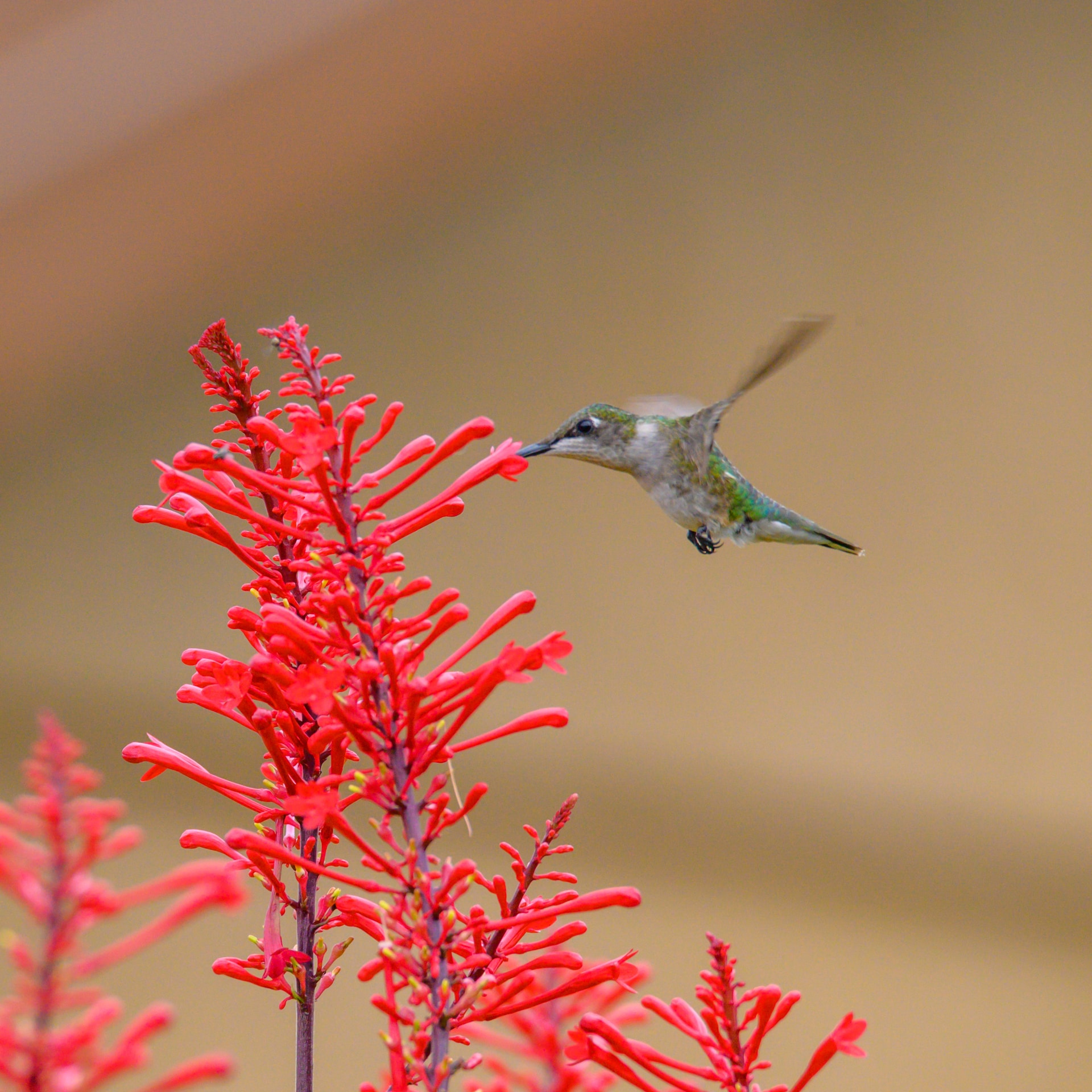Hummingbirds as Pollinators
Often celebrated for their vivid colors and impressive flight skills, hummingbirds play a fundamental role in ecosystems as agents of pollination. They fly from one flower to another, dipping their long beaks and tongues into nectar for food. During this process, pollen sticks on their beaks, which they transport to the next flower, thereby assisting in cross-pollination. This way, hummingbirds contribute significantly to plant biodiversity.
Remarkably, hummingbirds are considered ecological super-specialists. Unlike generalists that feed from a multitude of plants, hummingbirds choose specific flowers that suit their long beaks and high-energy needs. Consequently, these unique feeding behaviors have a direct impact on pollination and the success of certain plants.
Fascinatingly, due to their unique characteristics and feeding habits, hummingbirds can even pollinate flowers that bees, the most common pollinators, cannot. Thus, hummingbirds prove themselves invaluable members of the ecosystem.
Hummingbird’s Role in Predator-Prey Relationships
In ecosystems, hummingbirds are not just pollinators. They’re also an integral part of the food chain, both as predators and prey, contributing to balance in the ecosystem. As predators, hummingbirds feed on small insects and spiders, maintaining pest populations at bay.
Several predators feed on hummingbirds, including larger birds, spiders, and even certain kinds of mammals. This predator-prey dynamic influences other species’ population sizes and affects broader habitat dynamics, expanding the impact hummingbirds make on their ecosystems.
It’s a delicate balance, one that highlights how critical each organism, however small, is to the overall health and stability of an ecosystem. The role of hummingbirds in predator-prey relationships further amplifies their importance.
Hummingbirds and Ecosystem Resilience
Besides pollination and predator-prey dynamics, hummingbirds play a critical role in strengthening ecosystem resilience. By feeding on the nectar of certain plants, they ingest and subsequently disperse seeds. This seed dispersion, both locally and along migration routes, aids plant reproduction and diversity.
Furthermore, hummingbirds’ migration patterns can affect ecosystem resilience in their summer and winter habitats. Their presence aids in the health and variety of these habitats, creating conditions conducive for the survival of other species. Yet absence during non-migrating periods may allow certain plant species to go into a necessary dormancy, displaying another facet to their environmental impact.
Threats to Hummingbirds and Ecosystem Impact
Unfortunately, hummingbirds, like many species, face significant threats due to human activity. Primary threats include habitat loss and climate change. Decimation of their natural habitats limits their nesting locations, food supplies, and opportunities for reproduction, potentially leading to population decline.
Changes in climate can disrupt their migration patterns, creating a mismatch between the birds’ arrival at their destinations and the availability of food sources. Such disruptions can have a severe impact on the survival of hummingbirds and the ecosystems they inhabit.
These threats are not just about the survival of hummingbirds. As we’ve seen, hummingbirds contribute to the biodiversity and resilience of ecosystems. Consequently, the decline in hummingbird populations can trigger ripple effects throughout an ecosystem, potentially causing long-term damage.
<small>Image source: https://unsplash.com/photos/a-hummingbird-flying-over-a-flower-awsDoD30_gc </small>

